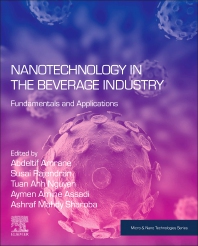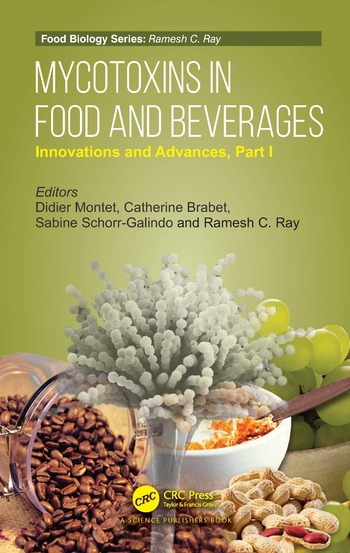Antioxidants make acai a go-to superfruit

Acai, a berry native to the Amazon, has only become a popular ingredient in the United States in the past few years. Before that acai had been consumed in the northern regions of Brazil for hundreds of years, but it wasn’t until the mid-1980s that the berry became popular in Rio de Janeiro, says Rodrigo Bosco Correa, marketing manager for Acai Roots Inc., San Diego.
He attributes the beginning of acai’s popularity to Hélio Gracie, the creator of Brazilian jiu-jitsu. Gracie recommended acai to his family and students, and soon, Brazilian jiu-jitsu fighters, surfers, runners and other athletes started consuming the berry in smoothies and acai bowls, a combination of acai puree, banana, soymilk and granola, Correa says.
With the dedication of an active fan-base, acai was associated with a healthy lifestyle and consequently became popular in Rio de Janeiro, Correa says.
“The popularity growth acai had in the last years within the U.S. and across the globe is pretty amazing, but, in my eyes, not surprising at all,” Correa says. “As a native Brazilian from Rio de Janeiro, who has been consuming acai since the mid-80s on a regular basis, I fully understand the ‘power of acai.’ I have seen this boom happen in Brazil decades ago and I am actually surprised that, only now, acai is gaining this popularity in the U.S. and rest of the world.”
In recent years, acai has steadily increased its presence in the U.S. market, particularly due to its healthy reputation.
“Acai berries have more antioxidants than blueberries or pomegranates,” says Jeremy Adams, brand manager and head of marketing for Bossa Nova Superfruit Co. LLC, Los Angeles. “Antioxidants help maintain a healthy cardiovascular system and protect against free radical formation in the body. Free radicals have been linked to inflammation, cellular damage and premature aging.”
In the United States, formulations featuring acai have expanded beyond smoothies and acai bowls, says Don Giampetro, vice president of iTi Tropicals, Lawrenceville, N.J.
“In the past, people could barely pronounce the name ‘acai,’” he says. “Most people you ask now are familiar with the product. With this familiarity, more and more acai is being used in a broad range of applications, including beverages, yogurts, syrups and even savory applications.”
Berry’s success
According to Mintel International’s Global New Products Database, acai made an impact on the American market in 2008 with almost 230 beverage launches formulated with the ingredient or using acai as a flavor. Since then, nearly 110 beverages included acai in 2009 and so far in 2010, almost 90 beverages have used the berry or its flavor. This year’s launches vary from Acai Roots’ Pure Acai Juice to a Berri Acai flavor of Absolut Vodka.
Also popular is combining acai with other ingredients that are naturally high in antioxidants. Acai Green Tea from Revolution Tea, Phoenix, is one of the company’s top six best-selling tea flavors, it says. The variety contains real acai berries from Brazil along with natural flavors.
“Acai was added to our tea offerings due to the tremendous buzz and attention that consumers and the media were giving this little fruit,” says Monica Chinichian, brand marketing manager for Revolution. “More importantly, we added acai due to the tremendous level of antioxidants and health benefits found in this berry, which are up to 10 to 30 percent that of blueberries and pomegranates.”
The antioxidant content of acai, which is measured in oxygen radical absorbance capacity (ORAC) values, and the cost of competitive products contributes to acai’s continued popularity, says Emilio Gutierrez, vice president of technical services for BI Nutraceuticals, Long Beach, Calif.
“The unit cost of ORAC is really what drives the popularity,” Gutierrez says. “… He’s going to pick acai over grapeseed every day of the week. It’s one-tenth the price, and that’s why I think it’s become so popular. It has a fruity flavor, it’s perfect for a beverage and you get a lot of bang for your buck in terms of ORAC.”
BI Nutraceuticals offers water soluble acai extract and works with its customers to identify the grade of extract that is best for the company’s application, Gutierrez says. The company qualifies and tests its raw material and has four processing plants, three in the United States and one in China.
Suppliers emphasize that the rise in popularity of acai crowded the market with some companies choosing low-quality supplies, formulating off-tasting products and making far-reaching health claims.
“Since there are so many companies in the industry today using acai as an ingredient in their products, it is hard for consumers to determine which ones indeed use a high-quality acai ingredient,” Acai Roots’ Correa says.
Acai Roots produces a variety of ready-to-drink, frozen and powdered acai products. The company sources its acai from Belém, Brazil, using a “very particular process” to harvest the berries, Correa says.
“Acai is a very sensitive berry,” Correa says. “Once it is harvested, its skin must be processed into a frozen pulp within about 15 hours, otherwise it loses its nutritional values and antioxidant concentration. Acai Roots ensures all acai used in the production of our products is processed at a very short amount of time after the berries have been harvested. The facility that we use to process the skin into pulp is just a couple of hours away from the location where the berries are harvested – guaranteeing a nutritional and top of the line end product.”
Bossa Nova offers a line of acai and superfruit juices and recently introduced 32-ounce sizes for its Acai Original Juice and Acai Blueberry juices. Bossa Nova sources its acai from long-standing partnerships in the Amazon rainforest with two of the oldest and most advanced acai co-ops with 20 and 25 years of experience, says Alton Johnson, chief executive officer and founder of Bossa Nova.
“We embarked on a strategy to ensure our ability to only harvest acai berries at the peak of ripeness for optimal taste and antioxidants from the very beginning,” Johnson says. “By choosing sustainable harvested co-op based fruit, we’re able to cherry-pick the peak eight weeks of the season, eschewing the common practice of shoulder-season harvesting for four or five months, which results in much lower antioxidant levels and poor taste.”
Ingredient company iTi Tropicals represents Sambazon Brazil on acai. The partnership with a well-known acai processor has helped to grow iTi Tropicals’ acai business, Giampetro says. The company offers acai pulp/puree, clarified acai juice and clarified acai juice concentrate for ingredient applications sourced from Sambazon’s state-of-the-art production facility, he says.
“We also provide specialized items for application areas that may require specific variations in product specifications,” Giampetro says. “Whether you are making a smoothie application where you need thickness and particulates, or a clarified juice from [not-from-concentrate sources], or a juice item where you want to use a combination of juice concentrates, we have the right product for the application.”
While acai has grown in the past few years, suppliers say its peak has yet to hit. New applications and blends with other fruits is one area of expansion iTi Tropicals sees on the horizon, Giampetro says. Bossa Nova is planning a targeted advertising campaign to expose its juices to a broader audience, Adams says. Acai Roots hopes its tagline of “Not just a berry, a lifestyle!” will become a mantra for more consumers, Correa says.
“The acai market and industry still has a long way to go,” he says. “It will continue to grow for a long time as more and more people learn about acai and include it in their diet and lifestyle. The differentiation about acai is that it is not just a berry, it is a lifestyle. And this fact will help maintain acai in the market as a stable ingredient in the future.” BI
Looking for a reprint of this article?
From high-res PDFs to custom plaques, order your copy today!






